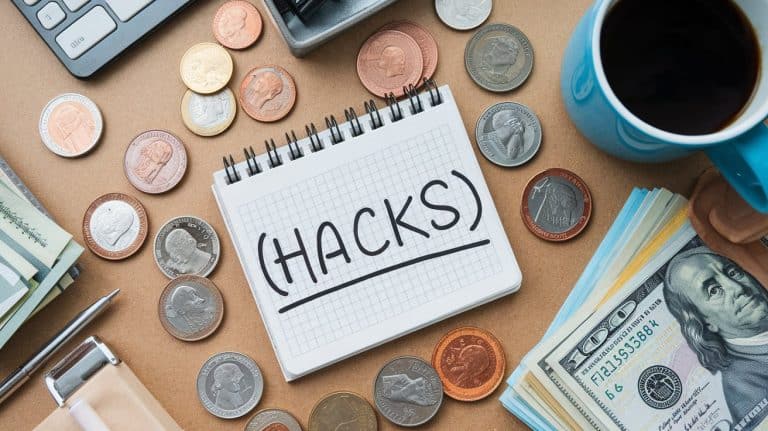13 Frugal Living Tips to Help You Spend Less Every Month

Ever feel like your paycheck disappears before you even get a chance to enjoy it? You’re not alone. According to recent studies, most people underestimate their spending by 20-30% every month. But what if I told you that you could save money without giving up the things you love? That’s the beauty of frugal living. It’s not about cutting out all the fun but spending smarter so you can save more, enjoy life, and feel financially secure. Let’s dive into 13 practical frugal living tips to help you do just that.
1. Use Reusable Products to Cut Costs
If you go through rolls of paper towels and packs of plastic baggies like they are free (they’re not), this is for you. Switch to reusable silicone storage bags, washable paper towels, and refillable water bottles, this will save you a ton over time. Sure, the upfront cost might feel a little steep, but you’ll see the savings add up. For example, a $20 pack of reusable paper towels can replace hundreds of dollars spent on disposable ones over a year.
2. Grow Your Own Herbs and Vegetables
Fresh herbs at the grocery store can cost an arm and a leg. Instead, you can start growing your own basil, mint, and lettuce in small pots on your windowsill, or your garden (if you have one). It’s surprisingly easy, and you don’t need a green thumb to get started. Tomatoes and peppers are also great options if you have a little outdoor space. Not only it will save you money, but there’s something so satisfying about cooking with herbs you grew yourself.
If you’re new to gardening, start with herbs like basil or parsley, they’re low-maintenance and grow quickly. For veggies, cherry tomatoes and lettuce are beginner-friendly. You can even regrow green onions from scraps by placing the roots in a glass of water. It’s fun, frugal, and you get to eat delicious, free veggies!
3. Start Cooking in Batch
If you dread cooking every night, and those last-minute takeout orders are killing your budget, you should dedicate a few hours on a set day to batch cooking. Make big portions of soups, stews, and casseroles, then freeze them for later. It’s a lifesaver on busy weeknights and keeps you from overspending on convenience foods. You can use inexpensive staples like beans, rice, and frozen veggies to stretch your meals even further.
To make batch cooking even easier, invest in some good-quality freezer-safe containers. Label everything with the date and contents so you don’t end up with mystery meals. And don’t forget to rotate your freezer stash to avoid waste.
4. Buy High-Quality Secondhand Items
Thrift stores and online marketplaces like eBay or Poshmark are goldmines for high-quality, gently used items. You can score everything from a KitchenAid mixer to a designer dress. Focus on durable items like furniture, tools, or kitchen appliances, they’re often just as good as new but way cheaper.
When shopping secondhand, patience is key. It might take a few trips or searches to find exactly what you’re looking for, but the savings are worth it. And don’t forget to inspect items carefully for any damage before buying them.
5. Use Facebook Marketplace and Buy Nothing Groups
If you haven’t checked out your local Buy Nothing group or Facebook Marketplace, you’re missing out. You can find free furniture, baby clothes, and even appliances just by browsing. These community-based platforms are perfect for finding what you need without breaking the bank.
To get the most out of these groups, be specific in your searches and check regularly. Popular items go fast, so act quickly if you see something you need. And don’t be afraid to post “ISO” (in search of) requests, you might be surprised by what people are willing to give away.
6. Take Advantage of Seasonal Discounts
Timing is everything when it comes to saving money. You should always buy winter coats in spring and holiday decor right after the season ends. Retailers slash prices to clear out inventory, so you can snag great deals if you plan ahead.
For example, you could buy a high-quality winter jacket for 70% off in March and let it sit in your closet until the next winter. The savings will be worth the wait. The same goes for back-to-school sales, Black Friday deals, and end-of-season clearances. A little planning can stretch your budget further.
7. Repair Things Instead of Replacing Them
If your favorite pair of jeans ripped, and you’re thinking about tossing them, don’t. You can find a simple sewing tutorial on YouTube and fix it yourself. Learning to repair clothing, electronics, or small household items can save you a fortune. Plus, it’s great to know you don’t have to replace something just because it’s a little worn.
Start with basic repairs like sewing buttons or patching holes. For electronics, check out iFixit for step-by-step guides. And if you’re not confident doing it yourself, consider local repair shops where experts can help.
8. Use Store Reward Points Strategically
I love a good reward program. At my local grocery store, I earn points on every purchase and use them to get discounts on essentials. It’s like getting free money just to buy what I already need. Just make sure you’re not overspending just to earn points, stick to your budget!
To maximize rewards, sign up for loyalty programs at stores you frequent. (Not credit cards!!) Combine points with sales or coupons for even bigger savings. And don’t forget to check for bonus point opportunities, like filling out surveys or referring friends.
9. Use Cash Only for Purchases
Swiping a card is so easy that it’s easy to lose track of spending. That’s why I’ve started using cash for certain categories, for you this could be something like groceries or entertainment. Physically seeing the money leave my wallet makes me think twice before buying something I don’t really need.
Try the envelope system: allocate a set amount of cash for each spending category each month. Once the cash is gone, that’s it, no dipping into other funds. It’s a simple but effective way to stick to your budget.
10. Borrow Instead of Buying
Do you really need to buy a power drill for that one-time project? Probably not. You can borrow tools, books, and even party decorations from friends and neighbors. Libraries and tool-lending programs are also great resources for things you need to use occasionally.
For example, my local library loans out everything from gardening tools to baking pans. And if you’re part of a Buy Nothing group, you can often find people willing to lend items for free. It’s a great way to be frugal and save money.
11. Learn Basic Skills to Save Money
Picking up simple skills like sewing, basic carpentry, or home maintenance can save you so much money. You’ll no longer need to pay for alterations or minor repairs around your house. YouTube is full of free tutorials, just search for what you need to learn.
Start with small projects, like hemming pants or fixing a leaky faucet. As you gain confidence, you can tackle bigger tasks. Not only will you save money, but you’ll also feel more self-sufficient.
12. Make Your Own Beauty Products
If you’re used to spending a small fortune on skincare and haircare products, you should know that you can actually make your own face masks with ingredients like honey and oatmeal. You can also use coconut oil as a hair treatment. It’s affordable, natural, and works just as well as store-bought products.
For a simple DIY face scrub, mix sugar with olive oil and a few drops of essential oil. It’s gentle, effective, and costs pennies compared to store-bought scrubs. Experiment with different recipes to find what works best for you, and remember, YouTube is your friend!
13. Embrace Minimalism
Frugal living and minimalism go hand in hand. You should start focusing on buying only what truly adds value to your life. Decluttering can also help you sell items you no longer need, which puts a little extra cash in your pocket.
Start by decluttering one area at a time, like your closet or kitchen. As you go, ask yourself if each item brings you joy or serves a purpose. Selling unused items on platforms like Facebook Marketplace can help fund your frugal living goals.
Conclusion
Frugal living is about being intentional with your spending so you can enjoy the things that matter most. Start small by trying one or two of these tips, and see how much you can save without feeling like you’re missing out. With the right strategies, you can save money, enjoy life, and feel more financially secure. And no, it doesn’t mean living off instant ramen or skipping out on fun with friends.






